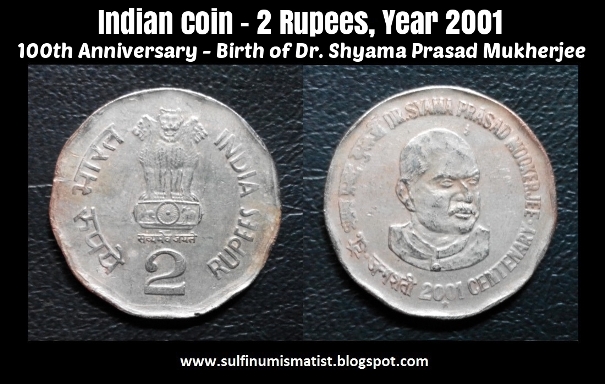 |
Indian Coin 25 Paise, Year 1974
Indian Coin 25 Paise, Year 1975
Indian coin - 25 Paise, Year 1977
Indian coin - 25 Paise, Year 1978
Indian coin - 25 Paise, Year 1982 - IX Asian Games (Delhi)
Mint : Kolkata
Metal: Copper-Nickel
Obverse : Ashoka lion capitol, denomination below.
Reverse : Symbol of the 1982 Asian Games from "Jantar Mantar"
Coin type: Commemorative coins
The 9th Asian Games were held from November 19, 1982 to December 4, 1982 in Delhi, India. This was the second time the Games were held in Delhi as it was also host to the inaugural 1951 Asian Games. New Delhi joined Bangkok (four times) as the only cities to host multiple editions of the Asian Games.
The Delhi Asian Games was the first Asiad to be held under the aegis of the Olympic Council of Asia (OCA). The Asian Games Federation, under whose jurisdiction the first eight Asian Games had been held, dissolved to make way for the OCA.
A total number of 4,595 athletes, coming from 33 countries, competed in this Asiad. Debut sports were equestrian, golf, handball, rowing, and Women's field hockey. These Asian Games also saw the beginning of Chinese dominance in the medals tally. Japan had won the most number of medals in previous editions of the Games. China made its presence felt in the sporting world by dethroning Japan as the top gold medalists.
In preparation for the IX Asian Games, colour television was introduced in India in a big way, as the Games were to be broadcast in colour.
The mascot for the Games was Appu – a kid elephant. Known in real life as "Kuttinarayanan", this elephant fractured its leg in an accident when he was seven years old – he stepped into a septic tank. That wound would not heal and it eventually killed him. Kuttinarayanan died on May 14, 2005.
Host of the next (10th) Asiad in 1986, and the 24th Summer Olympics in 1988, South Korea participated in the New Delhi Asiad with a 406-person delegation, including an observation team to study the facilities, management and events.
Indian coin - 25 Paise, Year 1984
Indian coin - 25 Paise, Year 1986
Indian coin - 25 Paise, Year 1988
Indian coin - 25 Paise, Year 1989
Indian coin - 25 Paise, Year 1991
|

Indian coin - 25 Paise, Year 1996
Indian coin - 25 Paise, Year 1997
Indian coin - 25 Paise, Year 1998
Indian coin - 25 Paise, Year 2002
Indian coin - 50 Paise, Year 1984
Indian coin - 50 Paise, Year 1985
Indian coin - 50 Paise, Year 1993
Indian coin - 50 Paise, Year 1999
Indian coin - 50 Paise, Year 2000
Indian coin - 1 Rupees, Year 1991
 |
| Indian coin - 1 Rupee - Year 1991 |
Indian coin - 1 Rupee - Year 1996
Indian coin - 1 Rupee - Year 1999
Indian coin - 1 Rupee - Year 2000
 |
| Indian Coin 1 Rupees, Year 2002 |
Indian coin - 1 Rupees, Year 2008
 |
Indian Coin 1 Rupees, Year 2009
Indian Coin 1 Rupees, Year 2010
Subject : Reserve Bank Of India Platinum Jubilee 1935-2010
The RBI ( Reserve Bank of India) was established in India on 1st April, 1935. It regulates the issue of bank notes, keeps reserves with a view to securing monetary stability in India and operates the currency and credit system in the best interests of the country. The Central Office of the Reserve Bank was initially established in Kolkata, but was permanently moved to Mumbai in 1937.
To commemorate the Platinum Jubilee of establishment of RBI in 2010, India issued this 5 rupees coin on 1st April, 2010, for general circulation. Out of the other 4 coins issued on the same occasion, the 1 rupee, 2 rupees and the 10 rupees coins were issued for general circulation and the coin, in the denomination of 75 rupees, was issued as proof / uncirculated specimen.
Metal : Stainless Steel.
Reverse : The reverse of this coin shows the image of the emblem of Reserve Bank of India, namely Palm Tree and Tiger with inscription "Bharatiya Reserve Bank" in Hindi, on the left periphery and "RESERVE BANK OF INDIA" in English on the right periphery. The words "PLATINUM JUBILEE" in both Hindi and English along with year "1935-2010" is also inscribed below the emblem.
Indian coin - 1 Rupees, Year 2011
|

Indian coin - 1 Rupees, Year 2012
Indian coin - 2 Rupees, Year 1993
Bio Diversity (World Food Day)
To generate greater awareness, about ecological and environmental problems, among people, this 2 rupees coin was issued for general circulation on 16th October, 1993 – the World Food Day.
Metal : Copper-Nickel
Minted at : Mumbai, Hyderabad
Indian coin - 2 Rupees, Year 1996
Obverse : Depicts Sardar Vallabhbhai Patel facing right.
Reverse : Lion Capital of Ashoka Pillar-National emblem of India with 'Satyamev Jayte' below it, 2 in the middle and hindi script on left with 'Bharat Rupiye' and English script on right with India and Rupees.



























































Thank you for giving us excellent information about British India Coins.Your blog benefits people who want to know about historical British India Coins.
ReplyDeleteAnna Coins | King George Coins | Victoria Coins King | Edward Coins | Calcutta Mint Gold Coins.